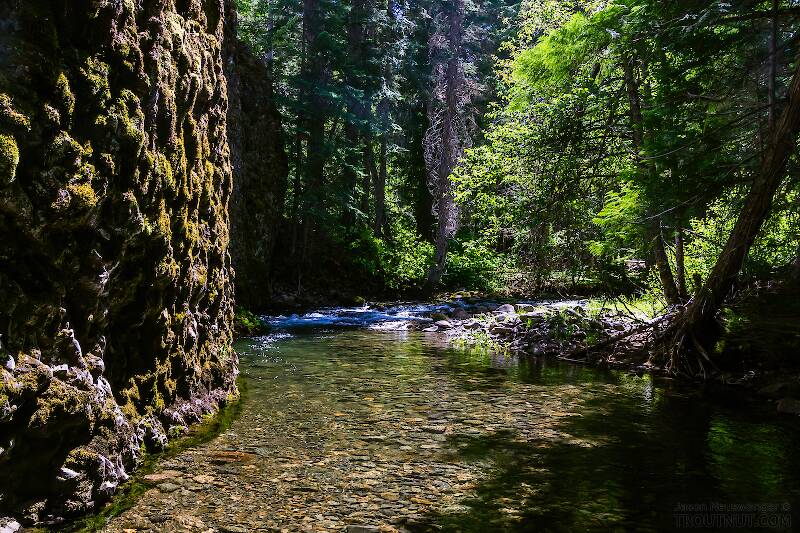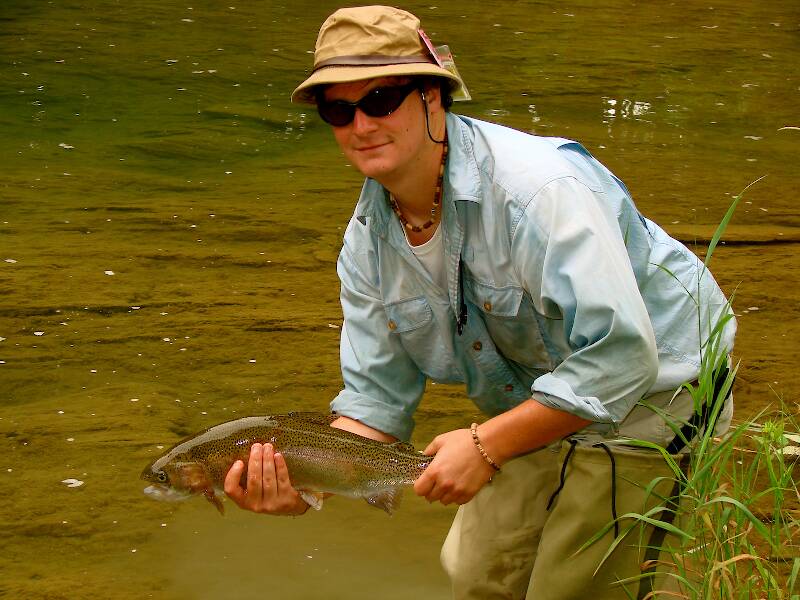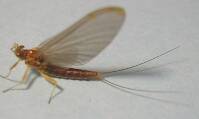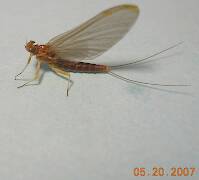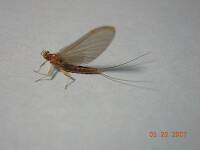
Salmonflies
Pteronarcys californica
The giant Salmonflies of the Western mountains are legendary for their proclivity to elicit consistent dry-fly action and ferocious strikes.
Featured on the forum

This one seems to lead to Couplet 35 of the Key to Genera of Perlodidae Nymphs and the genus Isoperla, but I'm skeptical that's correct based on the general look. I need to get it under the microscope to review several choices in the key, and it'll probably end up a different Perlodidae.

Troutnut is a project started in 2003 by salmonid ecologist Jason "Troutnut" Neuswanger to help anglers and
fly tyers unabashedly embrace the entomological side of the sport. Learn more about Troutnut or
support the project for an enhanced experience here.

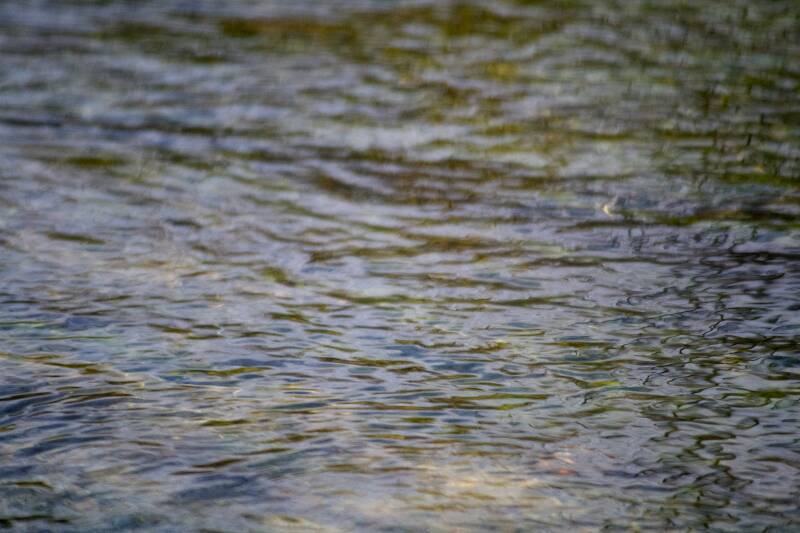
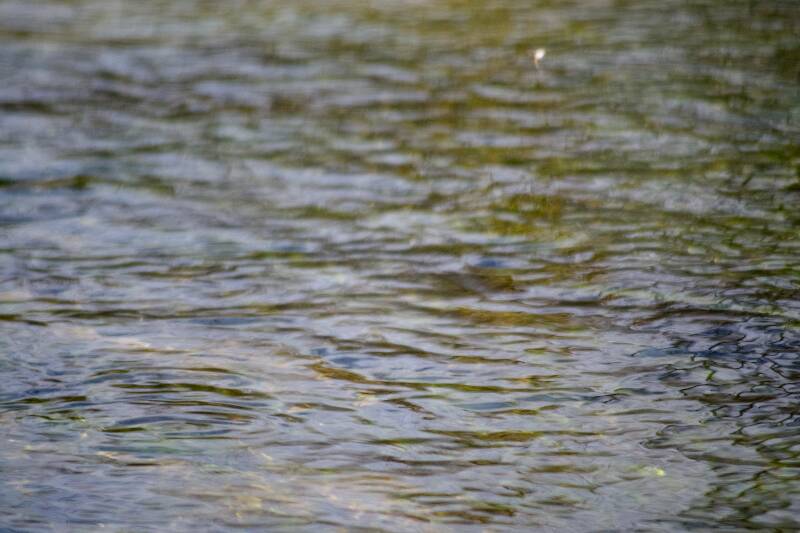
Mahones41 on Feb 22, 2012February 22nd, 2012, 12:56 pm EST
hey all,
I know these are not the best pictures but was wondering if it would be possible to make an idea based off these crappy pic's, time of year, time of day? these were taken around noon last sunday from the Letort spring run in carlisle pa. there was also a sporadic BWO hatch. the size of this insect is around 16-18. would a Cream Cahill make sense?
I know these are not the best pictures but was wondering if it would be possible to make an idea based off these crappy pic's, time of year, time of day? these were taken around noon last sunday from the Letort spring run in carlisle pa. there was also a sporadic BWO hatch. the size of this insect is around 16-18. would a Cream Cahill make sense?
Troutnut on Feb 22, 2012February 22nd, 2012, 2:17 pm EST
I can tell it's a roughly cream-colored mayfly dun with medium gray wings, but other than that, I'm afraid these pictures don't give enough to go on. Maybe someone who fishes the Letort routinely has experience with a hatch meeting that description at this time of year.
Jason Neuswanger, Ph.D.
Troutnut and salmonid ecologist
Troutnut and salmonid ecologist
Mahones41 on Feb 22, 2012February 22nd, 2012, 2:25 pm EST
how can you tell its a dun, Especially with the poor pics? i just feel that if you can tell by those pics then there is an obvious 'tell'.
Entoman on Feb 22, 2012February 22nd, 2012, 3:29 pm EST
The opaque wing. A spinner's wings would look clear.
"It's not that I find fishing so important, it's just that I find all other endeavors of Man equally unimportant... And not nearly as much fun!" Robert Traver, Anatomy of a Fisherman
Mahones41 on Feb 22, 2012February 22nd, 2012, 3:59 pm EST
Simple enough. and other way to determine would be the change of body color from dark to light or vice a versa depending on the insect correct?
Entoman on Feb 22, 2012February 22nd, 2012, 4:26 pm EST
Yep. Though I'm not aware of any off the top of my head who's bodies go from dark to light excepting middle abdominal segments with some species.
"It's not that I find fishing so important, it's just that I find all other endeavors of Man equally unimportant... And not nearly as much fun!" Robert Traver, Anatomy of a Fisherman
Oldredbarn on Feb 23, 2012February 23rd, 2012, 5:40 am EST
If I had spotted a fly looking like this one at this time of year I might have dropped everything and ran it's ass down...Don't normally see flies in that hue this time of year.
Interesting discussion. Maybe...What happens when a lone bug hatches ahead of its cousins? Is this possible?
The only fly I can remember seeing of that apparent color and size, and I hate long distance id's :), that may show up "earlier" in the season (It was April here though/maybe May?), was Anthopotamus distinctus...Used to go by Potamanthus distinctus and that was in a natural spring pond.
I'm playing here of course. No way in hell can anyone here be sure at that distance. Fun to speculate, no?! :) I'm wondering if this is just some odd outlier?
Spence
Interesting discussion. Maybe...What happens when a lone bug hatches ahead of its cousins? Is this possible?
The only fly I can remember seeing of that apparent color and size, and I hate long distance id's :), that may show up "earlier" in the season (It was April here though/maybe May?), was Anthopotamus distinctus...Used to go by Potamanthus distinctus and that was in a natural spring pond.
I'm playing here of course. No way in hell can anyone here be sure at that distance. Fun to speculate, no?! :) I'm wondering if this is just some odd outlier?
Spence
"Even when my best efforts fail it's a satisfying challenge, and that, after all, is the essence of fly fishing." -Chauncy Lively
"Envy not the man who lives beside the river, but the man the river flows through." Joseph T Heywood
"Envy not the man who lives beside the river, but the man the river flows through." Joseph T Heywood
Konchu on Feb 23, 2012February 23rd, 2012, 6:21 am EST
many times mayfly dun (subimago) wings are gray, and then the spinner (adult) wings are clear. dark --> light?
some biological populations do have built in variation in the timing of their development. this is a topic that is getting some academic attention.
for the those interested in some scientific details, an "in press" study of a tropical abalone tells about this.
some biological populations do have built in variation in the timing of their development. this is a topic that is getting some academic attention.
for the those interested in some scientific details, an "in press" study of a tropical abalone tells about this.
PaulRoberts on Feb 23, 2012February 23rd, 2012, 6:51 am EST
Well...I wasn't going to say anything, but I am doubting the date. But now that I see what look like bright green leaves in the water in the first image ...
Entoman on Feb 23, 2012February 23rd, 2012, 9:51 am EST
That could be watercress, Paul.
"It's not that I find fishing so important, it's just that I find all other endeavors of Man equally unimportant... And not nearly as much fun!" Robert Traver, Anatomy of a Fisherman
Oldredbarn on Feb 23, 2012February 23rd, 2012, 12:22 pm EST
some biological populations do have built in variation in the timing of their development. this is a topic that is getting some academic attention.
This is interesting Luke...I think its easy to see how this would/could be beneficial to a species...Take advantage of possible niches, not be limited to a particlar time or place...But what would be the trigger?
In the early 1900's the population of Sandhill Cranes was down to nearly nil and in northwest Canada they discovered a flock that no one knew existed. Fearing that if something were to happen to this population they moved some to Wisconsin and are teaching them how to fly south with ultra-lites.
My point is, that if there were some sort of mechanism that might spread out a mayfly's emergence it might enhance their survival chances, protect them from some sort of catastrophe eliminating a whole species, or at least putting a serious hurt on them...Or they may simply go the way of those critters that were unable to adapt when their environment changed.
On the funny side though, I can see one dun sitting in a tree shrugging his shoulders or whatever they are called :) and saying, "Hey!? Where is everybody?" :)
Spence
"Even when my best efforts fail it's a satisfying challenge, and that, after all, is the essence of fly fishing." -Chauncy Lively
"Envy not the man who lives beside the river, but the man the river flows through." Joseph T Heywood
"Envy not the man who lives beside the river, but the man the river flows through." Joseph T Heywood
Martinlf on Feb 23, 2012February 23rd, 2012, 12:34 pm EST
I have seen this bug at this time of year on the Letort, and it did get my attention, but I didn't have waders on and there were just a few on the water--then none. A local guide once told me a tale about "winter sulphurs" on the Letort, and I believed him, though the whole thing sounded apocalyptic to me at the time. It would be very, very interesting to know what this bug is, though. Perhaps it's a very early invaria or dorthea. If the opportunity presents itself to capture one of these at some point, I will drop everything and to quote Spence, "run its ass down." Until then it's a huge mystery to me.
"He spread them a yard and a half. 'And every one that got away is this big.'"
--Fred Chappell
--Fred Chappell
Mahones41 on Feb 23, 2012February 23rd, 2012, 8:01 pm EST
hey all,
the date is accurate. it was a warm day for Feb. here in Pa maybe around 50 degrees. the stream is spring fed and the pics were taken relatively close to the head of the spring. the "Meadows" for those who know the Letort. sorry again about the quality of the pic, but i guess it makes it fun. im very new to this whole IDing thing but my first reaction when i saw it was Cream Cahill. toyed with the idea of a sulfur but felt like this was way too early for that. my thinking is that the warm temps all winter made it possible for an early hatch? looking at the diffrent pics (Cream Cahill vs Sulfer) on this sight i am again leaning toward Cream Cahill. (excuse my lack of knowledge pertaining to body parts) but the bigger/ taller wing had a more pronounced yellow streak much like this picture:
http://www.troutnut.com/specimen/733
i have asked another guy on a diffrent forum who was also fishing the same area as me that day. so hopefully he will have some more knowledge so we can put this thing to bed and speculate as to why it happend mabye
the date is accurate. it was a warm day for Feb. here in Pa maybe around 50 degrees. the stream is spring fed and the pics were taken relatively close to the head of the spring. the "Meadows" for those who know the Letort. sorry again about the quality of the pic, but i guess it makes it fun. im very new to this whole IDing thing but my first reaction when i saw it was Cream Cahill. toyed with the idea of a sulfur but felt like this was way too early for that. my thinking is that the warm temps all winter made it possible for an early hatch? looking at the diffrent pics (Cream Cahill vs Sulfer) on this sight i am again leaning toward Cream Cahill. (excuse my lack of knowledge pertaining to body parts) but the bigger/ taller wing had a more pronounced yellow streak much like this picture:
http://www.troutnut.com/specimen/733
i have asked another guy on a diffrent forum who was also fishing the same area as me that day. so hopefully he will have some more knowledge so we can put this thing to bed and speculate as to why it happend mabye
Entoman on Feb 23, 2012February 23rd, 2012, 8:27 pm EST
Hi Mahones,
I agree with Louis (Martinlf). That is most likely a sulfur ephemerellid of some kind (Spiny Crawler nymph). http://www.troutnut.com/specimen/480 The Cream Cahills are heptageniids (Flat-headed Clinger nymph) that usually prefer cobble and faster water. http://www.troutnut.com/specimen/764
BTW - Your comment about the "yellow streak" on the leading edge of the wing is more often a trait of pale ephemerellids. http://www.troutnut.com/fullsize/picture-im_extax/100
Also, Light Cahill wings often appear blotchy or with a window screen look, as opposed to the plain pattern as appears to be the case in your photo. Can you remember whether the wing looked plain or obviously patterned?
I agree with Louis (Martinlf). That is most likely a sulfur ephemerellid of some kind (Spiny Crawler nymph). http://www.troutnut.com/specimen/480 The Cream Cahills are heptageniids (Flat-headed Clinger nymph) that usually prefer cobble and faster water. http://www.troutnut.com/specimen/764
BTW - Your comment about the "yellow streak" on the leading edge of the wing is more often a trait of pale ephemerellids. http://www.troutnut.com/fullsize/picture-im_extax/100
Also, Light Cahill wings often appear blotchy or with a window screen look, as opposed to the plain pattern as appears to be the case in your photo. Can you remember whether the wing looked plain or obviously patterned?
"It's not that I find fishing so important, it's just that I find all other endeavors of Man equally unimportant... And not nearly as much fun!" Robert Traver, Anatomy of a Fisherman
Troutnut on Feb 23, 2012February 23rd, 2012, 10:48 pm EST
A local guide once told me a tale about "winter sulphurs" on the Letort, and I believed him, though the whole thing sounded apocalyptic to me at the time. It would be very, very interesting to know what this bug is, though. Perhaps it's a very early invaria or dorthea. If the opportunity presents itself to capture one of these at some point, I will drop everything and to quote Spence, "run its ass down."
Please do! Same goes for Mahones... if you ever get the chance to capture one of these live at this time of year and post very clear pictures, it would be really interesting to quite a few people.
Jason Neuswanger, Ph.D.
Troutnut and salmonid ecologist
Troutnut and salmonid ecologist
Oldredbarn on Feb 24, 2012February 24th, 2012, 4:38 am EST
http://www.google.com/imgres?imgurl=http://www.troutnut.com/im_user_ident/picture_240_large.jpg&imgrefurl=http://www.troutnut.com/topic/3534/yellowish-possibly-night-hatching-mayfly&usg=__xGo-GS1XhHVu3h2bjJy8u74y6HU=&h=428&w=815&sz=55&hl=en&start=20&zoom=1&tbnid=GT8dzv4jx-M8MM:&tbnh=76&tbnw=144&ei=q59HT6SULM3UgAfNqcz9DQ&prev=/search%3Fq%3Dpotamanthus%2Bdistinctus%26um%3D1%26hl%3Den%26sa%3DN%26gbv%3D2%26tbm%3Disch&um=1&itbs=1
Not to beat a dead horse or a mysterious dun to death...:) What hook size would you guess this bug to be? What camera did you use? It looks rather large to me but there is little to compare it with...
Spence
Not to beat a dead horse or a mysterious dun to death...:) What hook size would you guess this bug to be? What camera did you use? It looks rather large to me but there is little to compare it with...
Spence
"Even when my best efforts fail it's a satisfying challenge, and that, after all, is the essence of fly fishing." -Chauncy Lively
"Envy not the man who lives beside the river, but the man the river flows through." Joseph T Heywood
"Envy not the man who lives beside the river, but the man the river flows through." Joseph T Heywood
Entoman on Feb 24, 2012February 24th, 2012, 7:11 am EST
I don't think so, Spence. The Letort undoubtedly has "river flowers", but this isn't one of them. Anthopotamus loves big water, and they like it much warmer (both season and water). But, anything is possible I suppose. I wouldn't have thought we'd see a Sulfur this time of year, either!:)
Mahones - The reason why Spence asked about size is because Golden Drakes are pretty good sized, as mayflies go. Now you have two questions to jog your memory about!:)
Mahones - The reason why Spence asked about size is because Golden Drakes are pretty good sized, as mayflies go. Now you have two questions to jog your memory about!:)
"It's not that I find fishing so important, it's just that I find all other endeavors of Man equally unimportant... And not nearly as much fun!" Robert Traver, Anatomy of a Fisherman
PaulRoberts on Feb 24, 2012February 24th, 2012, 7:15 am EST
I have a friend in E NY and he says it has been very warm there. He's a zoologist and says, "It's actually eerie". Buds are heavy on the trees too. He also said it was unseasonably warm last fall and he saw an ornamental cherry in bloom in November. It was at an art museum and he asked about it, and the reply was, "You're the biologist; You tell us!"
I just spoke to my sister further upstate in NY and sh said it's been warm there too, and without any coaxing, she said, "It's weird. To tell you the truth, it's a little scary."
I just spoke to my sister further upstate in NY and sh said it's been warm there too, and without any coaxing, she said, "It's weird. To tell you the truth, it's a little scary."
Mahones41 on Feb 24, 2012February 24th, 2012, 7:18 am EST
hook size 16.. and it was taken with a nikon d3100 with a 55mm-200mm lens and the lens, if i remember correctly, was at full zoom. i was attempting to capture a picture of a natural in the water. i was set up next to the bank with a nice current bringing the mystery guest nice and close to me. to someones point above the water directly above me was choppy due to larger rocks.. these pictures were taken of a natural further away from where i was hoping to capture a close up.. i am pretty sure i just saw it and released the shutter not even waiting to focus..
still waiting on the other guy that was fishing there that day to weigh in
still waiting on the other guy that was fishing there that day to weigh in
Quick Reply
Related Discussions
Topic
Replies
Last Reply
2
Jul 14, 2008
by Wiflyfisher
by Wiflyfisher
6
Jun 20, 2008
by GONZO
by GONZO
Re: One of my favorite Montana views and the Madison River 
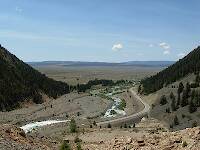
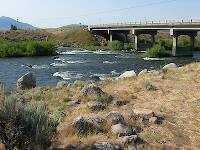
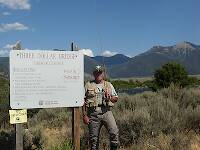
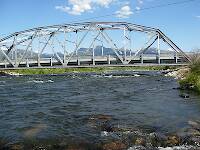
In the Photography Board by Wiflyfisher
+ 1





In the Photography Board by Wiflyfisher
16
Jan 7, 2012
by Wiflyfisher
by Wiflyfisher

